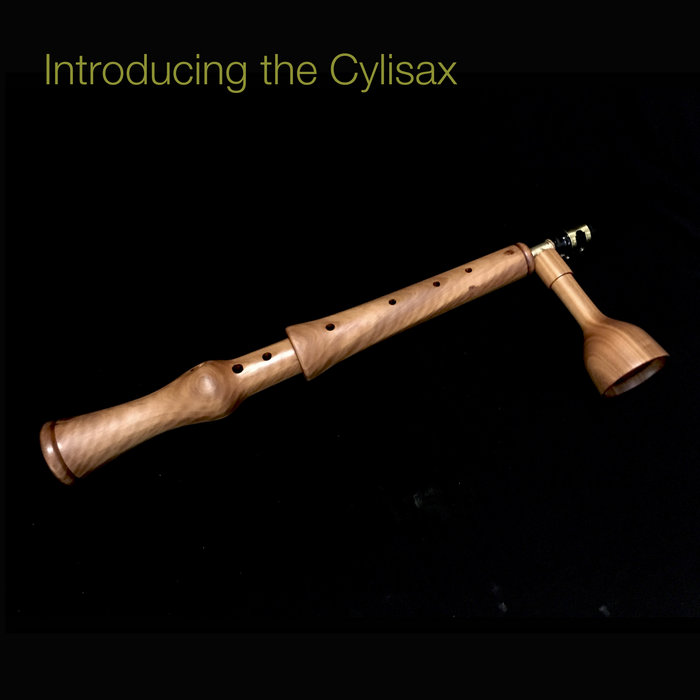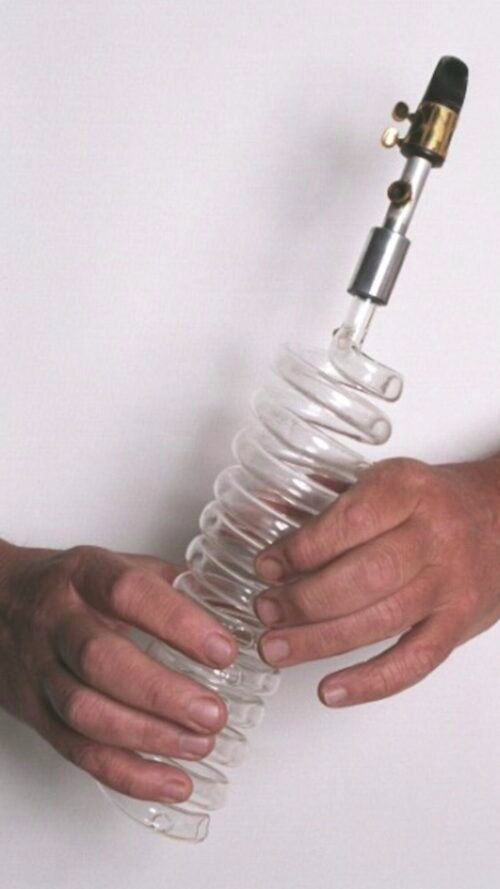Linsey has been making musical instruments since 1971 when he started making bamboo flutes. This led to making a range of renaissance flutes from wood. An Australia Council grant in 1976 enabled him to travel in Europe measuring early woodwinds in museum collections. He then set up a workshop in London for 2 years making renaissance flutes and also began making reed instruments, especially gaidas (bagpipes) from Macedonia and Bulgaria.
On returning to Australia in 1979 he continued exploring Eastern European folk instruments, concentrating on gaidas. In 1987 he began designing and making an instrument called a tarogatino, which eventually developed into the saxillo (a single reed conical bore instrument inspired by the Hungarian tarogato). It is like a mellow soprano saxophone (wooden, with no keys). This has gradually developed over the next 30 years.
Linsey has also since 1973 run hundreds of community workshops in instrument making. This began with flutes and panpipes. In 1988 he invented the “Humarimba” a marimba (or large xylophone) suspended from the belts of two of the three players. Since then the humarimba has become a mainstay of Linsey’s work in Community Music (the highlight being a project in 1995 called “The Big Marimba” where 400 people built 320 metres of marimbas (with 2400 tuned marimba bars) that crossed the Brisbane River attached to the Victoria Bridge as part of the Brisbane Biennial Music Festival.
Since 1980 Linsey has also specialized in making musical instruments from various house and garden objects such as the garden hose panpipes, the watering can clarinet, rubber glove bagpipes, carrot flutes and carrot clarinets, chair flutes, broom clarinets etc. These instruments have featured in many of his shows such as Out of the Frying Pan, Knocking on Kevin’s Door, Playpen, The Art of Food, Making Jam, Passing Wind, Live and Loopy and Paper, Scissors …Rock!
More recently he has designed hybrid wind instruments (see “Hybrid winds” article) such as clarinis (narrow bore clarinets) made from aluminium, wood, bamboo and glass.
Read Linseys Hybrid Winds article (pdf format)
There is also the Foonki which is a reed instrument which uses a plastic membrane (such as a garbage bag) as the reed which Linsey has been developing since 1999. Also, working with glass artisan Arnie Fuchs, Linsey has also developed glass bass clarinis such as Rosella and Mrs Curly (see below).
Most recently (since 2017 Linsey has been developing the CYLISAX (see below):
The Cylisax – now available for sale – $680AUD

The Cylisax is a single reed woodwind instrument designed and made by Linsey Pollak. It has a cylindrical bore and a branch tube just below the mouthpiece making the bore open at both ends. Because of this branch tube, it overblows the octave like a saxophone, rather than an octave and a fifth like the clarinet. It behaves like a conical bore single reed instrument and sounds like a mellow soprano sax rather than a clarinet. It has the range of 2 octaves from middle C to d’ and is fully chromatic using cross fingering (similar to recorder fingering). It uses a soprano saxophone mouthpiece. It was initially inspired by the development of Yamaha’s branch tube wind instrument, the Venova.
With a majority of the sound coming from the small branch tube I have created a bell at the end of this small tube as it makes a big difference to the volume and quality of the sound. Because it has a cylindrical bore I have called it ‘Cylisax.
I first experimented with making some Cylisaxes using irrigation polypipe in July 2017:
Then in August 2017 I made the first Mk1 version of the wooden Cylisax developing the design over the next 18 months to build the first Mk9 Cylisax in February 2019. I am playing a Mk9 Cylisax on this album (made from the Australian timber Budgeroo (Lysicarpus angustifolius):
Then in August 2017 I made the first Mk1 version of the wooden Cylisax developing the design over the next 18 months to build the first Mk9 Cylisax in February 2019. I am playing a Mk9 Cylisax on this album (made from the Australian timber Budgeroo (Lysicarpus angustifolius):
Make Your own Mr Curly and other clarinets.
This book will show you how to make your own musical instruments. The instruments in this book are members of the clarinet family. This means that they have a cylindrical bore and a single reed. I have developed these designs and measurements over the last 25 years and include just a small selection of instruments with various tunings and materials.
Glass Bass Clarinets made together with Arnie Fuchs (glassblower) & a Watering Can Clarinet
Instructions and measurements for making your own instruments












